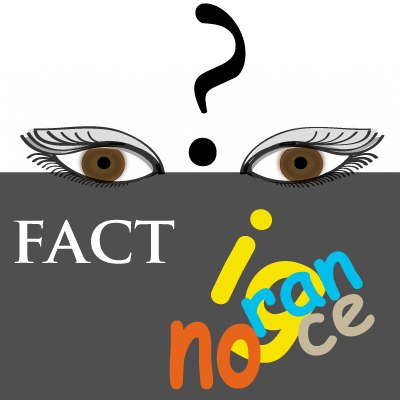 Water is not confined to political borders.
Water is not confined to political borders.
 An estimated 148 states have international basins within their territory (OSU, n.d., 2008 data)
An estimated 148 states have international basins within their territory (OSU, n.d., 2008 data)
 21 countries lie entirely within them (OSU, n.d, 2002 data)
21 countries lie entirely within them (OSU, n.d, 2002 data)
 There are 276 transboundary river basins in the world (64 transboundary river basins in Africa, 60 in Asia, 68 in Europe, 46 in North America and 38 in South America).
There are 276 transboundary river basins in the world (64 transboundary river basins in Africa, 60 in Asia, 68 in Europe, 46 in North America and 38 in South America).
 185 out of the 276 transboundary river basins, about two-thirds, are shared by two countries. 256 out of 276 are shared by 2, 3 or 4 countries (92,7%), and 20 out of 276 are shared by 5 or more countries (7,2%), the maximum being 18 countries sharing a same transboundary river basin (Danube)
185 out of the 276 transboundary river basins, about two-thirds, are shared by two countries. 256 out of 276 are shared by 2, 3 or 4 countries (92,7%), and 20 out of 276 are shared by 5 or more countries (7,2%), the maximum being 18 countries sharing a same transboundary river basin (Danube)
 46% of the globe’s (terrestrial) surface is covered by transboundary river basins.
46% of the globe’s (terrestrial) surface is covered by transboundary river basins.
 148 countries include territory within one or more transboundary river basins.
148 countries include territory within one or more transboundary river basins.
 39 countries have more than 90% of their territory within one or more transboundary river basins.
39 countries have more than 90% of their territory within one or more transboundary river basins.
 21 lie entirely within one or more of these watersheds.
21 lie entirely within one or more of these watersheds.
 Africa has about one-third of the world’s major international water basins – basins larger than 100,000 km2. Virtually all sub-Saharan African countries, and Egypt, share at least one international water basin. Depending on how they are counted, there are between 63 (UNEP, 2010b) and 80 (UNECA, 2000) transboundary river and lake basins on the African continent.
Africa has about one-third of the world’s major international water basins – basins larger than 100,000 km2. Virtually all sub-Saharan African countries, and Egypt, share at least one international water basin. Depending on how they are counted, there are between 63 (UNEP, 2010b) and 80 (UNECA, 2000) transboundary river and lake basins on the African continent.
 Rich nations are tending to maintain or increase their consumption of natural resources (WWF, 2010), but are exporting their footprints to producer, and typically, poorer, nations.
Rich nations are tending to maintain or increase their consumption of natural resources (WWF, 2010), but are exporting their footprints to producer, and typically, poorer, nations.
 European and North American populations consume a considerable amount of virtual water embedded in imported food and products
European and North American populations consume a considerable amount of virtual water embedded in imported food and products
 Each person in North America and Europe (excluding former Soviet Union countries) consumes at least 3 m3 per day of virtual water in imported food, compared to 1.4 m3 per day in Asia and 1.1 m3 per day in Africa (Zimmer and Renault, n.d.).
Each person in North America and Europe (excluding former Soviet Union countries) consumes at least 3 m3 per day of virtual water in imported food, compared to 1.4 m3 per day in Asia and 1.1 m3 per day in Africa (Zimmer and Renault, n.d.).
 Land grabbing is another increasingly common phenomenon. Saudi Arabia, one of the Middle East’s largest cereal growers, announced it would cut cereal production by 12% a year to reduce the unsustainable use of groundwater
Land grabbing is another increasingly common phenomenon. Saudi Arabia, one of the Middle East’s largest cereal growers, announced it would cut cereal production by 12% a year to reduce the unsustainable use of groundwater
 To protect its water and food security, the Saudi government issued incentives to Saudi corporations to lease large tracts of land in Africa for agricultural production. By investing in Africa to produce its staple crops, Saudi Arabia is saving the equivalent of hundreds of millions of gallons of water per year and reducing the rate of depletion of its fossil aquifers.
To protect its water and food security, the Saudi government issued incentives to Saudi corporations to lease large tracts of land in Africa for agricultural production. By investing in Africa to produce its staple crops, Saudi Arabia is saving the equivalent of hundreds of millions of gallons of water per year and reducing the rate of depletion of its fossil aquifers.
 Nearly all Arab countries suffer from water scarcity
Nearly all Arab countries suffer from water scarcity
 An estimated 66% of the Arab region’s available surface freshwater originates outside the region
An estimated 66% of the Arab region’s available surface freshwater originates outside the region


 In 21 cities, testers were instructed to 'pre-flush' water pipes before testing for lead content, against EPA guidance
In 21 cities, testers were instructed to 'pre-flush' water pipes before testing for lead content, against EPA guidance In 7 cities, testers removed aerators from spouts before running water, which can reduce lead content
In 7 cities, testers removed aerators from spouts before running water, which can reduce lead content In 23 cities, testers were told to run water slowly, which causes less lead to be dislodged from pipes.
In 23 cities, testers were told to run water slowly, which causes less lead to be dislodged from pipes.

